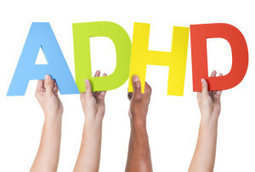What it is, who it affects, and help for parents and teachers from an ADHD expert.
Get Started for FREE
Sign up with Facebook Sign up with X
I don't have a Facebook or a X account
 Your new post is loading... Your new post is loading...
 Your new post is loading... Your new post is loading...
|

rodrick rajive lal's curator insight,
April 22, 2015 1:16 AM
It is not just kids with ADHD, but even normal kids that benefit from some movement in a class which lasts an hour or more. That doesn't mean that regular students squirm, but then there are certain drills, or accepted movements that are practised and followed in classes throughout the world. It is often all right to allow students to stand up, do an 'energiser' and then continue with their tasks. With kids having ADHD, we need to train ourselves as teachers to accept the idea of constant movement if it helps them without of course disturbing the rest of the class. In times when inclusion is the mantra in most of the progressive schools worldwide, it makes sense for teachers to be trained and in fact to encourage physical movement in children with learning disabilities. |











